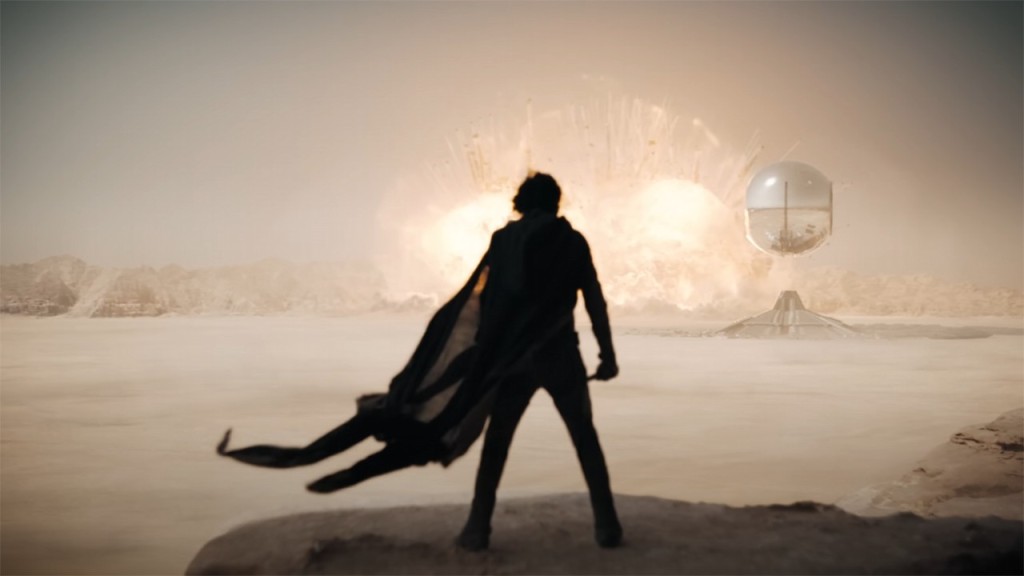
Dune: Part II exceeded my expectations and, like the first installment released in 2021 (which I also reviewed), deserves to be ranked among iconic science-fiction movies including 2001: A Space Odyssey, Alien, Star Wars, and Blade Runner. I think the simplest way to summarize my feelings is that whichever way one screens it, be it at a theater or streaming via a MAX subscription at home, it is worth whatever price you will be charged… but I must emphasize that if you have the ability, this must be seen in a theater because going to the cinema is an experience that further enriches whatever movie you are viewing.
Having never read the novels by Frank Herbert (save for the first chapter involving Paul placing his hand inside the box of death… I need to work on my attention-span for reading), I am unable to commend the faithfulness of these adaptations on my own merit. However, I saw both films with my brother and his best friend (both of whom are major fans of the original novels), and I spent the next two hours afterwards observing them rave about their vindication of both films. So, by way of proxy, I can confirm that this installment is worth seeing for anyone who read the books.

Dune delivers in every way imaginable. What struck me most was the cinematography, particularly with the depiction of colors through the rays of sun on the desert planet Arrakis. Sound plays a major role, too, such as the pulse vibrations placed in the sand used to conjure the dangerous sandworms. And we cannot omit anyone’s performances in this star-studded cast, led by Timothée Chalamet, Zendaya, Rebecca Ferguson, Stellan Skarsgård, Javier Bardem and Josh Brolin (always interesting to see these real-life friends as co-stars again, considering their first film involved Bardem hunting Brolin across the Texas desert in No Country for Old Men); in addition to new cast members including Austin Butler, Lea Seydoux, Florence Pugh, and Christopher Walken. I do not think it would take much persuasion for studio executives to greenlight raising the salary cap to include more A-listers such as Leonardo DiCaprio, Brad Pitt, or Tom Cruise.

What I most appreciate about this form of storytelling is learning about this setting through casual background noise with subtlety. It can be quite a turnoff when filmmakers attempt to reveal important story pieces when the unnatural dialogue makes it seem like they are proselytizing the narrative. The sign of a good science-fiction movie is when we can suspend our disbelief and accept the science that is presented to us, regardless of whether we have a degree in physics or are simply science-savvy, particularly when it comes to the technology the characters use (be it transportation or weapons). I can only hope that it won over Neil deGrasse Tyson, who has built a reputation for ruining nearly any movie for the scientific inaccuracies (especially when he remarked that the star constellations were wrong in Titanic).
But, above all, we cannot neglect the narrative and characters. Filmmakers can use the best production value available and wow everyone with the special effects, but it is utterly useless if the story and the characters are garbage. The politics embedded in this narrative recalls the drama of ancient Roman history as people calculate their moves to how leaders will be cast down and others will rise to replace them, whether they are virtuous or not… but lacking virtue always makes a character far more interesting (just ask Vincent Price about his preference for playing villains).

Dune has rightfully earned its place among our watercooler conversations as one of must-see movies of the year. If you are generally not a fan of science-fiction movies, I promise you that this is worth your attention. Movies that fire off all cylinders only come around every blue moon are always worth seeing, regardless of the genre and themes. Again, whatever price the theater charges for your ticket, it is worth every penny.